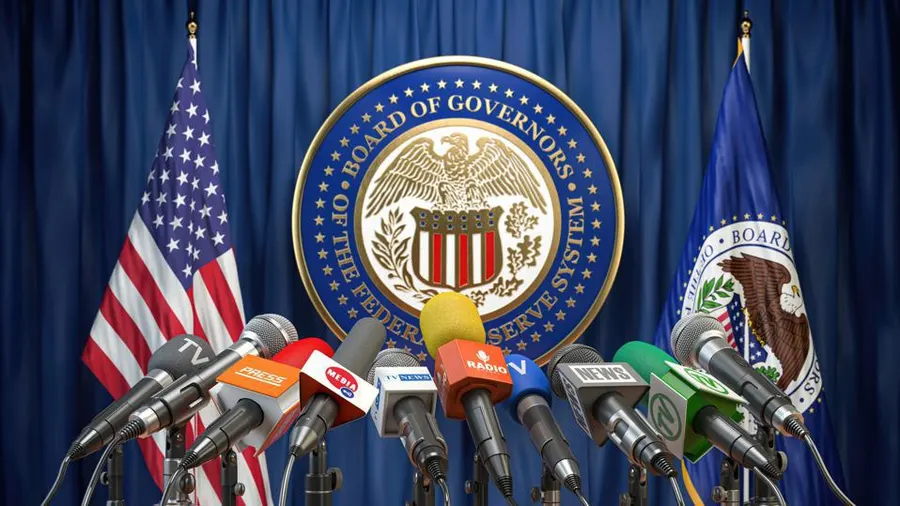Fed Raises Rates by 0.25% in Efforts to Tackle Inflation.
Introduction
In a decisive move, the Federal Reserve raised interest rates by 0.25% after skipping a boost last month. The decision came as a response to the persistent inflationary trend in the economy, signaling the Fed’s commitment to control rising prices.

Fed’s Rate Hike to 5.25% – 5.5%
The Federal Open Market Committee (FOMC), the rate-setting body of the Federal Reserve, announced an increase in the benchmark rate to a range of 5.25% to 5.5%. This marks the eleventh rate hike in the current cycle, bringing the rates to their highest level in 22 years.
Powell’s Flexible Monetary Policy
Federal Reserve Chairman, Powell, emphasized the need for flexibility in the central bank’s monetary policy. He stated that the options for September include either another rate hike or a pause, depending on the economic data at that time. This approach leaves the door open for further adjustments to counter inflation.
Expert’s Opinion on the Fed’s Strategy
Phillip Colmar, a global strategist at MRB Partners, offered insights into the Fed’s meeting. He believes that the Fed’s primary objective was to maximize flexibility, allowing for one more quarter-point hike, but not committing to more. Colmar mentioned that the Fed’s cautious stance on inflation, projecting it to remain above the 2% target until 2025, gives them room to adapt their approach in the coming months.
Market Response and Expectations
Despite the Fed’s deliberations, the market’s expectations for a rate hike in November remained relatively unchanged at around 40%, as per a note from Jefferies. Powell’s reluctance to provide any clear signals on the rate-increase path contributed to the market’s anticipation of future moves.
Fed Drops Recession Warning
Recent economic data showing faster-than-expected expansion in the first quarter, coupled with a cooling labor market and slowed inflation, led the Fed to reassess its recession forecast. The Fed’s staff, responsible for independent economic predictions, abandoned the previous recession prediction based on the economy’s recent resilience.
Core Personal Consumption Expenditures Price Index
The core personal consumption expenditures price index, a crucial indicator for the Fed, showed a 0.3% increase in May, down from 0.4% in the previous period. On an annual basis, the pace of increase slowed to 4.6% from the previous 4.7%. This data indicates the underlying price pressures and plays a significant role in the Fed’s decision-making process.
Relying on Data for Future Decisions
The Fed remains committed to monitoring new economic data to determine the appropriate stance of monetary policy. As debates continue in the months ahead, expectations for the Fed’s actions when it reconvenes in September will be influenced by the economic data received during the summer break.
Can the United States Escape a Recession?
Chairman Powell expressed confidence in the resilience of the United States economy, emphasizing that the real Fed funds rate, considering short-term inflation forecasts, is now in “meaningfully positive territory.” This conviction is based on the belief that the country can steer clear of a recession.
Conclusion
The Federal Reserve’s decision to raise interest rates by 0.25% reflects its commitment to tackling inflation and maintaining economic stability. Chairman Powell’s emphasis on flexibility and data reliance provides insights into the Fed’s approach in the coming months. As the economy evolves, the Fed will continue to assess the situation and adjust its policies accordingly to keep inflation in check and ensure a healthy economic environment.
Frequently Asked Questions
1. What prompted the Fed to raise interest rates?
The Fed raised interest rates by 0.25% in response to the persistent inflationary trend in the economy, aiming to tackle rising prices and stabilize the market.
2. How did the market respond to the Fed’s decision?
Market expectations for a rate hike in November remained relatively unchanged, around 40%, as investors awaited clearer signals from the Fed.
3. What was the Fed’s approach to its monetary policy?
Chairman Powell emphasized the need for flexibility, allowing for either another rate hike or a pause in September, depending on the economic data.
4. How did recent economic data influence the Fed’s decisions?
Recent statistics, such as the faster-than-expected economic expansion in the first quarter, the cooling labor market, and slow inflation, led the Fed to drop its recession warning.
5. What does the core personal consumption expenditures price index indicate?
The core personal consumption expenditures price index provides insights into underlying price pressures, excluding food and energy prices, influencing the Fed’s decision-making process.

